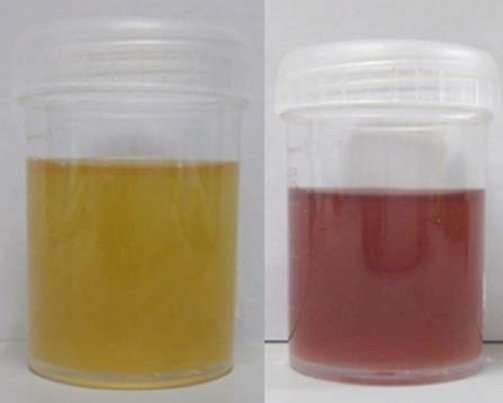September 24, 2018 report
Antifungal agent found to be possible treatment for porphyria

A large team of researchers from Spain, France and the U.S. has found that a common antifungal agent might be useful as a treatment for a rare type of porphyria. In their paper published in the journal Science Translational Medicine, the group describes screening thousands of compounds for a treatment for congenital erythropoietic porphyria (CEP)—a rare type of the disease—and what they found.
Porphyria is a name for a broad category of metabolic disorders that are characterized by errors in heme biosynthesis. Each type of the disorder results from a deficiency of a certain type of enzyme in the heme pathway, and each causes a different group of symptoms in the people who have it. One particularly rare type is CEP—it is caused by a deficiency in production of an enzyme called uroporphyrinogen III synthase (UROIIIS). That deficiency leads to a buildup of type 1 porphyrins. People who have it can experience symptoms such as sensitivity to sunlight, scaring, anemia and an enlarged spleen. As with other types of porphyria, there is no cure and treatments for it typically are palliative—patients are told to stay out of the sun, avoid skin irritants, etc. In this new effort, the researchers report that they believe they may have found a treatment for CEP that reduces symptoms.
The work by the team involved poring over thousands of compounds looking for a material that would interact with UROIIIS and then testing those they found. They report finding one such candidate, called ciclopirox, that was able to bind to the enzyme. Ciclopirox is a synthetic antimicrobial that is currently used as an antifungal agent to treat skin disorders.
Encouraged by their findings, the team began testing the therapeutic value of ciclopirox using CEP mouse models. They report that use of the agent in such models resulted in mice exhibiting normal levels of UROIIIS. They also found that its use resulted in lowered levels of porphyrin in red blood cells, urine and in the liver. It also led to an increase in a heme precursor, reductions in enlarged spleens and natural repair of tissues damaged by CEP.
The next step for the team will be looking into whether it would be safe to use ciclopirox continuously for treatment of CEP, followed by clinical trials.
More information: Pedro Urquiza et al. Repurposing ciclopirox as a pharmacological chaperone in a model of congenital erythropoietic porphyria, Science Translational Medicine (2018). DOI: 10.1126/scitranslmed.aat7467
© 2018 Medical Xpress

















